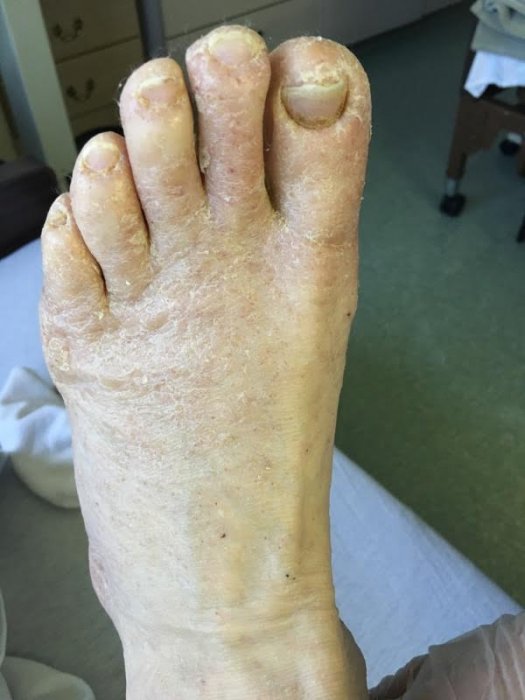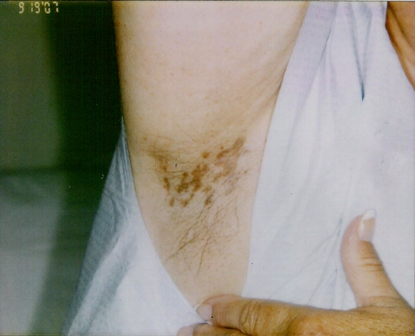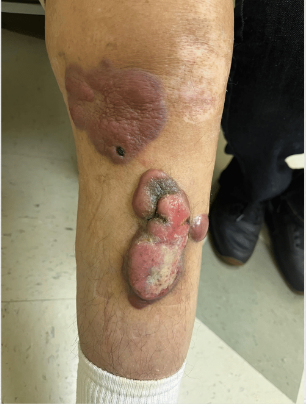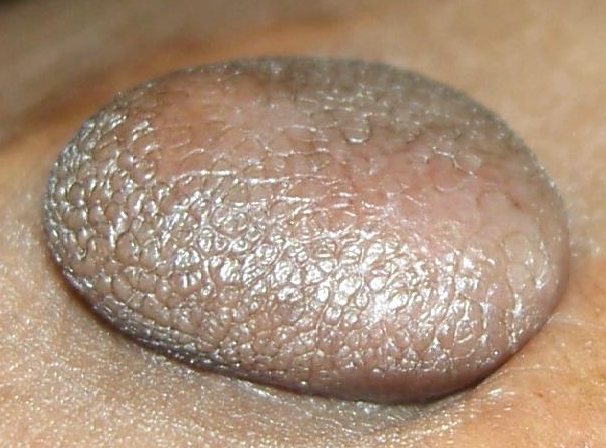Presenter: Brittany Grady, DO; Kevin Miller, DO; Charles Elias, DO; Shannon Wiedersum, DO; John Hassani, DO; Nicole Ruth, DO
Dermatology Program: Hackensack Meridian Health Palisades Medical Center
Program Director: Adriana Ros, DO
Submitted on: July 31, 2017
CHIEF COMPLAINT: Long-standing pruritic rash involving his back, hands, and feet
CLINICAL HISTORY: A 92-year-old Caucasian, male, long-term care patient presents with a complaint of a long-standing pruritic rash involving his back, hands, and feet. The nursing staff reported the rash to be present for the past year while he had been a long-term resident in their care. The rash began on the hands and had slowly spread to involve his trunk and lower extremities. The patient reported mild, but tolerable, pruritus associated with the rash. The patient denied fevers, chills, headaches, abdominal pain, shortness of breath, or recent weight changes. The patient had been prescribed several mid- to high-potency topical corticosteroids as well as several topical antifungal creams over the past year by his primary care provider. Currently, the patient was using betamethasone/clotrimazole cream twice daily as well as urea cream daily with no improvement in his condition. The patient had been living in this long-term care facility for one year prior to our dermatology consultation. The patient denied recent travel or a history of household contacts with a similar rash prior to his admission to long-term care. The patient had a past medical history that included: dementia, cardiovascular disease, chronic kidney disease, hypertension, and osteoporosis.
PHYSICAL EXAM:
On physical exam, the patient’s distal extremities were diffusely covered in scale with some evidence of hyperkeratosis. As the rash progressed proximally on the extremities, small erythematous papules and burrows became evident. The back had mild scale with evidence of excoriation. Involved sites had minimal evidence of background erythema.

LABORATORY TESTS:
A skin scraping technique was utilized for this case. A papule on the right palmar hand was vigorously scraped and the collected material was transferred to a glass slide. Mineral oil and a slide cover was laid on top of the glass slide. The slide was taken to the in-house pathology laboratory for review by the dermatology residents (See below).
DERMATOHISTOPATHOLOGY:
It was deemed unnecessary to perform a skin biopsy in this case based on the findings of the skin scraping.
DIFFERENTIAL DIAGNOSIS:
1. Psoriasis
2. Crusted scabies
3. Non-bullous impetigo
4. Darier’s disease
5. Keratoderma




